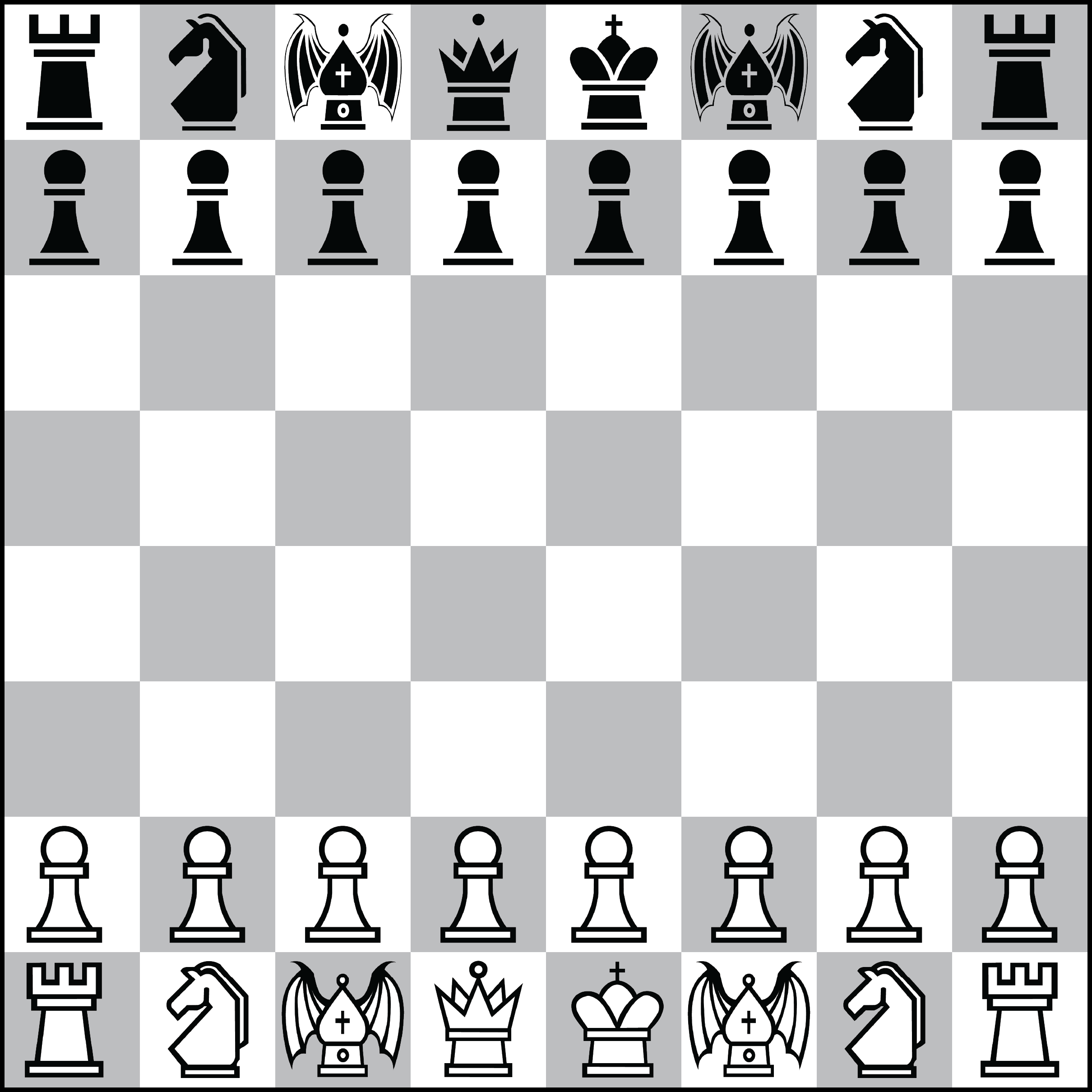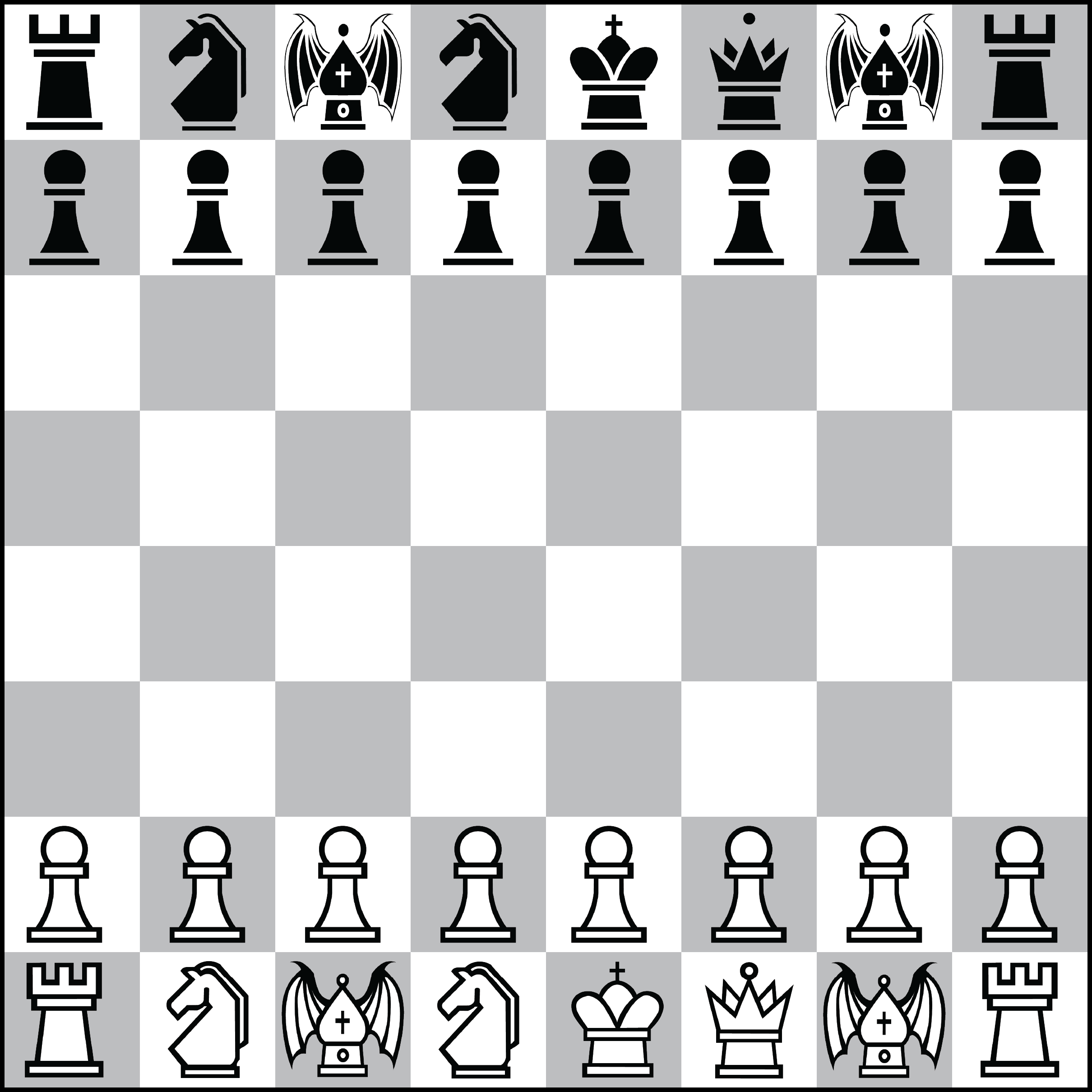HOW TO PLAY
Paradigm Chess30
Paradigm Chess30 was invented by Lourenzo van Niekerk and Craig Willenberg in May 2020. This concept has added a new dimension to piece play, which brings into sharp focus the need for greater consideration when exchanging pieces. The obvious result is that there is a more complex dynamism on the chessboard and, hence, fewer simplified games and draws occur. Inspired by the evolution of Chess, Capablanca's Chess and MRL Chess Paradigm(Fischer Random Chess + Xiangqi), the birth of the Dragon Bishop emerged. This unique idea of enhancing the normal classical Bishop by adding the movement capabilities of the Xiangqi horse will radically transform the game of chess ̶ by increasing attacking possibilities without jettisoning the classical positional and strategical chess principles.
Setup
Paradigm Chess 30 is played on a normal 8x8 chess board with all the normal chess pieces on both sides (1 King, 1 Queen, 2 Rooks, 2 Knights and 8 Pawns), but the two normal chess Bishops are replaced with two Dragon Bishops.
In accordance with the nature and complexity of Paradigm Chess30, the chess pieces will be shuffled with only King, Rooks and Pawns remaining on original starting squares as per normal chess to ensure normal castling. Thirty positions could be generated by using the computer program on chess.com or simply by rolling a die to randomize piece placement to vacant squares.
In some instances, the Dragon Bishops will start on the same colour squares (two dark-squared/two light-squared).

Standard Chess Configuration

Paradigm Chess30 Shuffled Configuration
Pieces
The Dragon Bishop moves and captures like a normal classical Bishop diagonally and a Xiangqi horse (not jumping over pieces like a Knight but moving one square vertically or horizontally, followed by one square outward diagonally). (See diagram 1 below.)

- The Dragon Bishop on g1 can move to either square f3 or h3, because g2 is vacant.
- The Dragon Bishop on d1 cannot move like a normal Knight to square c3, as the d2 pawn blocks it. But it can move to square c2 like a normal Bishop.
- The Dragon Bishop on d8 can move to square b7 (because c8 is vacant), as well as square c7 as a normal Bishop.
The Dragon Bishop on g8 is blocked by the g7 pawn and cannot move as a normal Knight, but it can develop normally as a Bishop on the f7 to c4 diagonal.
Rules
All rules remain the same as per normal chess.
Standard castling rules apply due to king and rooks on original squares as per normal chess although positions are randomised.
Pawn promotions include the Dragon Bishops.
Notes
Paradigm Chess30 articles were published on www.s64chess.com and Chess South Africa websites. A domain paradigmchess30.epizy.com where online play exists using a Virtual desktop with Parsec or Anydesk.
Paradigm Chess30 also has a Facebook page where online tournaments with live commentary have been posted. Two new Dragon Bishops are designed for over-the-board chess and positioned on the long and/or short side of the king with the same movement capabilities as explained above.
Refer to Chess Variant website.
